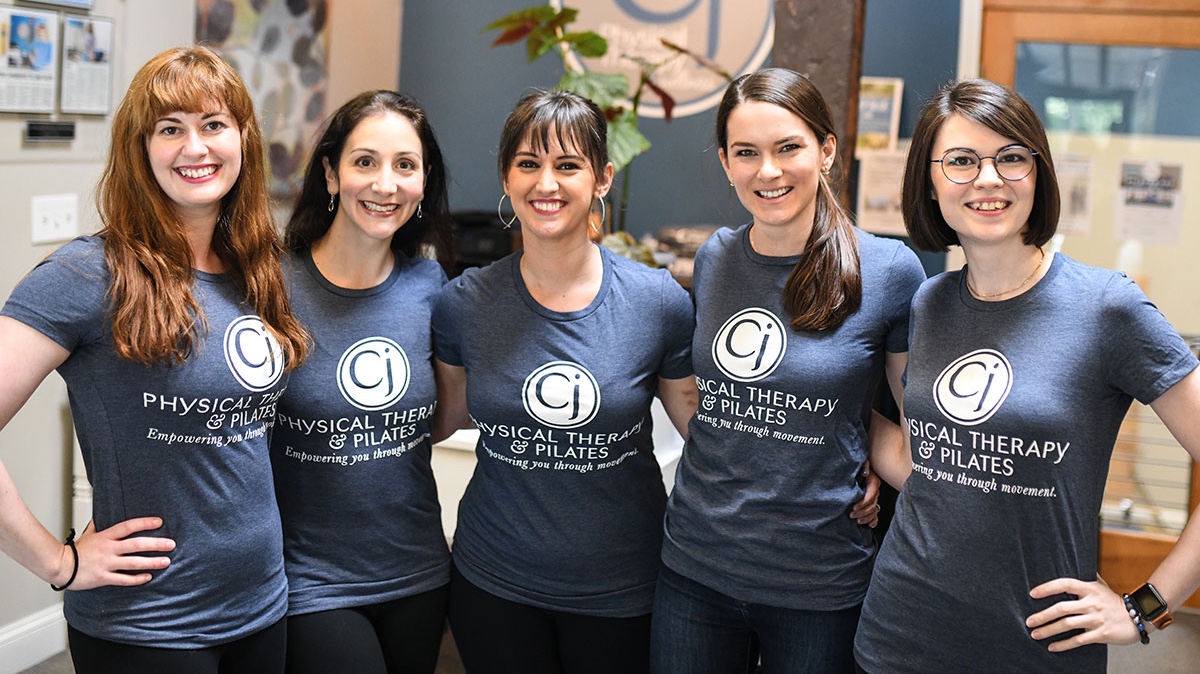5 Ways to Save your Back While Stuck at Home
Staying at home during the coronavirus pandemic doesn’t have to mean staying stationary. If you already have occasional or chronic back pain, it’s so important to take extra care of your spine during this time! Even people who rarely experience back pain may see new flare-ups due to increased time spent sitting at home.
For many, work stations at home are not ergonomically ideal or perhaps even nonexistent. On top of that, social-distancing and closed fitness facilities are likely to reduce our overall level of activity and mobility throughout the day. Combined, prolonged, poor posture and reduced mobility are the main ingredients for increasing back and neck pain. But have no fear! There are still many ways to prevent your back pain from kicking up, even while stuck at home!
1. Stand Up & Take a Load Off
When we sit for too long, the burden of our weight is placed abnormally on our spine and can cause damage over time. Before long, those small loads add up to real pain. It makes sense when you consider that our bodies were designed to stand, sit, crawl, run, kneel, bend and move through the world in many different ways. It was never designed to sit in one position for prolonged periods, day after day. Sit too long, too often, and it can lead to bulging discs and weak, brittle muscles that are prone to tearing and other damage.
The solution? Limit your sitting to half-hour periods with a few minutes of standing in between, and you’ll reduce the uni-directional forces on your spine. In other words, if you sit for a long time at work or at home, stand up and walk around a little bit every thirty minutes. Aside from participating in regular strengthening exercise, like Pilates, this is the easiest way for the average person to prevent back injury (and heal your back faster if you already have an injury).
2. Watch for Curves
We have natural curves in our spine that help us handle stress and loads. Whether sitting or standing, it’s important to maintain these curves. When standing, our spinal curves occur more naturally and are usually easier to maintain. When we sit, the protective curves in our spine are harder to maintain and often disappear. And while a healthy core and strong back muscles are important to back health, they won’t protect your back if you sit for long periods, or when the curve in your lumbar area disappears while you’re sitting.
Fortunately, the solution is as simple as rolling up a towel and placing it between your chair or car seat and the small of your back (just above the belt line). Using a purpose-designed lumbar roll is my favorite choice, and what I use for low-back support. You can use a lumbar roll in your office chair, car, and on the plane if you’re flying! If you want to learn where you can get on of your own contact us about them here. Or see in more detail how to use them in our free e-book!
3. Extend instead of Bend
The human spine (and entire body) craves balance, which means both extension and flexion. But we spend the majority of our time in flexion, bending over to put shoes and socks on, brushing our teeth, driving, sitting at work and then driving home. At home we bend forward to cook, sit some more as we eat and then curl up on our couch or an easy chair. As long as we’re not gymnasts or circus performers, it’s safe to say we could all use a little more extension in our day. A really good exercise is to stand and place your hands on your lower back for support and then arch back as far as you can go. Repeat this 10 times, at least once per day. This is also a great activity to do when you are interrupting your sitting during the day. If you’ve never arched you back like this before, it may feel stiff or even hurt a little at first. But, with a gradual increase in frequency, it will feel less stiff and more natural over the course of a few days. If it doesn’t, or becomes troublesome for you, stop and consult with a qualified physical therapist who specializes in back pain.
4. Stay Hydrated
We all know that drinking water is important, but don’t forget WHY! Water lubricates the joints, keeps the body’s soft tissues and fascia hydrated, and boosts exercise performance (yes, including at-home Pilates!). Water also improves skin health and elasticity — keeping you looking (and feeling) young! Water is also essential for digestion, flushing the body of waste and reducing unnecessary snacking. Water makes up 90% of our blood – which helps regulate the body temperature, deliver oxygen to all the cells in our body, and improve concentration and reasoning. Now more than ever, to stay healthy and mobile – make sure you are getting at least 7-8 cups of high quality H2O per day!
5. Build Stability
Mobility and then stability! Stability comes from a strong core. It can seem challenging to maintain strength with little equipment at home, but there are, in fact, plenty of ways to activate your muscles without any equipment at all! A basic strengthening flow daily can help keep our muscles active, blood flowing and reduce likelihood of pain. The flow you see below targets some of our most commonly weak muscle groups in a simple-to-do floor routine.
If you like these tips and want to learn even more ways to prevent debilitating back episodes, you can sign up for access to our FREE COVID-19 back pain survival guide right here! And don’t forget to check out our Virtual Pilates programs if you’re looking for a way to exercise in your home that will target — and resolve — back pain. We have virtual small group classes at least once every day, Monday through Friday. We’re here for you through this quarantine and beyond!




